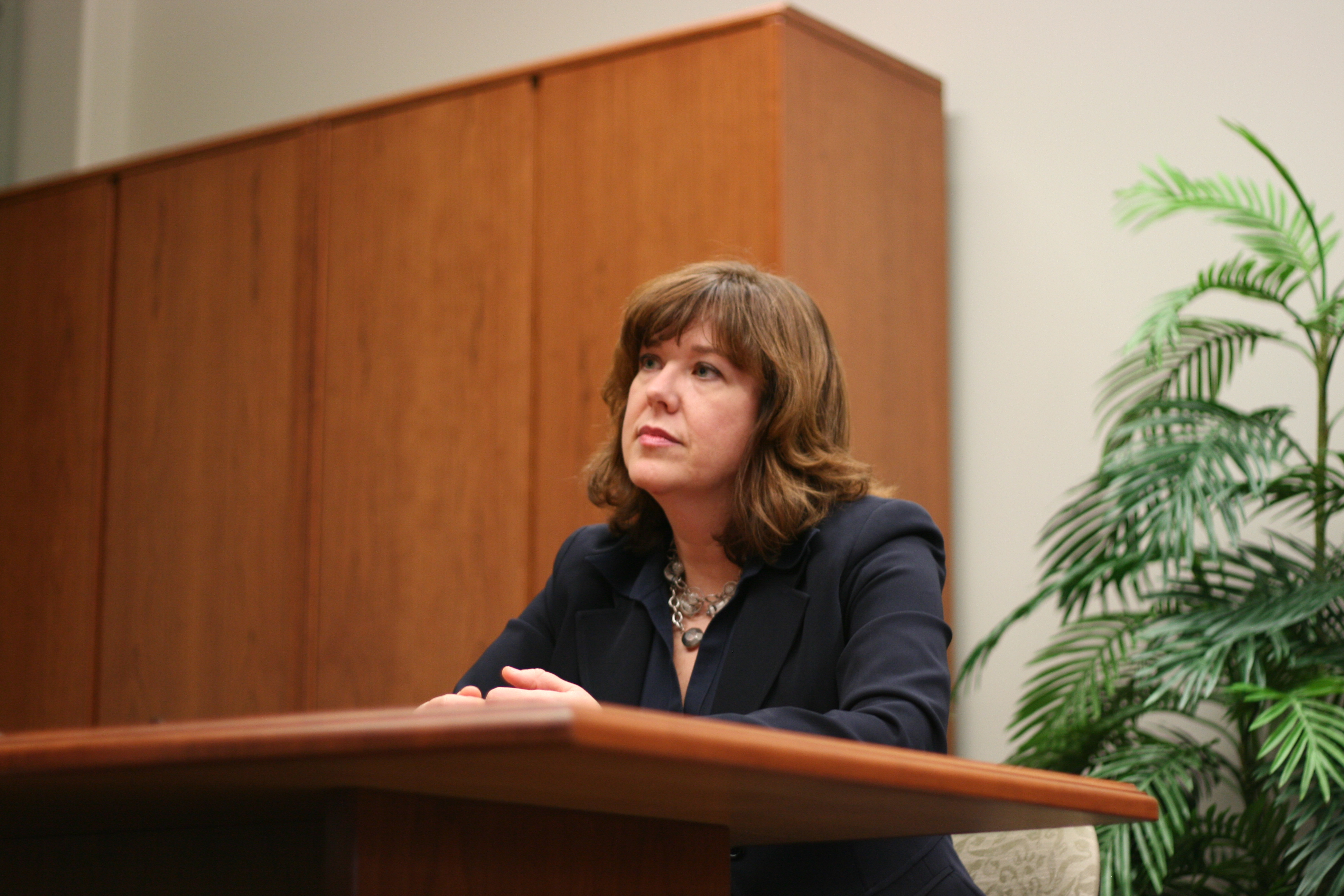Building opportunity for outreach and engagement
The university’s focus on outreach and engagement is getting a boost with the establishment of two new offices within University Advancement that are designed to create a front door to the institution.
By Colleen MacPherson Part of the Academic Innovation Initiatives recently announced by the Provost's Committee on Integrated Planning, the new Office of Aboriginal Engagement and the Office of Community Outreach and Engagement are an effort to make it easier for faculty to connect with communities and visa versa. "The goal is to provide a place for people to call as a starting point," explained Heather Magotiaux, vice-president of advancement.
Part of the Academic Innovation Initiatives recently announced by the Provost's Committee on Integrated Planning, the new Office of Aboriginal Engagement and the Office of Community Outreach and Engagement are an effort to make it easier for faculty to connect with communities and visa versa. "The goal is to provide a place for people to call as a starting point," explained Heather Magotiaux, vice-president of advancement.The offices are part of the response to the Foundational Document on Outreach and Engagement, said Magotiaux, and follow up on the work of the Senate Roundtable on Outreach and Engagement. That body was set up "to help identify some of the opportunities and barriers that might exist toward greater engagement with communities – geographic communities and sectors like health, the arts or business." One key finding was the lack of what Magotiaux termed a front door for the University of Saskatchewan.
"The university doesn't have a physical front door. A virtual front door makes sense for some … but if you're a member of one of these small communities, it's sometimes confusing to know where you would go to find faculty expertise, or where you would go if you wanted a group of students to work on an experiential learning opportunity with your organization.
"The purpose of these offices is to create a facilitation mechanism to help community to connect with the university and the university to connect with community."
Magotiaux went on to define outreach activities as initiatives that take the university out into the community; workshops and presentations are two examples. "Engagement," she said, "is you coming in to us," including through community-based research.
While the two new offices are expected to do similar kinds of work, "we did want to make a particular emphasis around First Nations and Métis engagement to show our partners in those communities that we're serious about wanting to engage with them." That office, directed by Candace Wasacase-Lafferty, will be located on the English River First Nation just south of Saskatoon.
The Office of Community Outreach and Engagement will be headed by a yet-to-be-named special advisor, "a faculty member already involved in community-based research, someone who places a high priority on experiential learning and is experienced in the area themselves," said Magotiaux. "Their job will be to help reach out to other faculty members." That office will be located at Station 20 West Community Enterprise Centre near St. Paul's Hospital. The space is expected to be available in July.
Magotiaux said the advantage of creating the two offices within University Advancement has to do with its established structure and expertise. "Most of what we're looking at doing is sharing this resource with all of the different parts of the university and we do a lot of that in Advancement. We're already organized that way and oriented in that regard."
There is already a culture of outreach and engagement on campus, she said, thanks to its priority within integrated planning. "I think that we've had a history of strength in this area, and that is going to continue. These offices are going to provide a little more visibility to it and going to provide some support for people in doing their work around outreach and engagement as well."
Enhancing Aboriginal relationships
Candace Wasacase-Lafferty has spent 10 years in various roles at the University of Saskatchewan but being part of the new Office of Aboriginal Engagement at English River "is the most exciting initiative I've ever been a part of."
The newly named director of the office said its "presence on an urban reserve says that the university is committed to Aboriginal engagement for the long haul." The office will provide an important bridge between First Nations and Métis communities and the
U of S, she said, and will give the university the chance "to look deeper into and be part of the communities. There may be cultural values and ways of conducting relationships that the university can learn. There are so many positive things about our communities that we can teach Saskatchewan."
Wasacase-Lafferty, who was born on the Kahkewistahaw First Nation in the Qu'Appelle Valley, said, she sees her role as "promoting the university and all its possibilities through engagement with First Nations and Métis communities. It's about building Aboriginal capacity on campus and leveraging that capacity in Aboriginal communities. My approach will be ‘how can I support your plans?' because I want this role to be an enhancement of what already exists."

